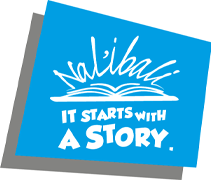 Reading with comprehension is a human right that doesn’t happen for most South Africans. Is this blanket statement really true or are we ignoring the fact that significant numbers of people are reading in a different form of language than is expected of them – particularly the younger generation criticised for writing CVs and matric exams in so-called txt-tese, SMS language or chat speak?
Reading with comprehension is a human right that doesn’t happen for most South Africans. Is this blanket statement really true or are we ignoring the fact that significant numbers of people are reading in a different form of language than is expected of them – particularly the younger generation criticised for writing CVs and matric exams in so-called txt-tese, SMS language or chat speak?
Are we not throwing out the baby with the bathwater when we blame poor matric results on this new “language” without looking at the role of instant messaging and mobile platforms in bringing young people into contact with reading and writing? In fact, it is a profoundly meaningful form of reading and writing which actually develops “alternative literacy” patterns (a new form of communication requiring unique skills, shared by specific communities, as David Craig argued in his essay, Instant Messaging: The Language of Youth Literacy). These days, understanding how to use available technology in literacy learning is key. The schools of tomorrow have no walls – and for many parts of the world, tomorrow is already here.
Take the individualised technological learner-based and learner-paced programmes in schools in Russia and in Argentina that are part of ORT’s non-profit global federation of autonomous national organisations that promote education and training worldwide. Or a school federation in working-class south London in the UK that has every conceivable piece of technology – five schools are linked together with iPAds, iPhones, Promethean electronic tables, white boards… You name it, they have it! Principal Neil Hopkins presides over this empire without raising a sweat – it’s fully networked. Kids are working hard, participating in thinking, designing, planning and producing – not just reproducing – and they get some of the best results in the country. Here in South Africa, some cell phone users report they can only go online once in a couple of weeks because they don’t have the R2.00 to get connected. So how on earth do we catch up in a country where internet and cell phone connections remain so expensive?
For a start, we should teach kids within their own context: start where they are with what they have and what they want! And what they have is cell phones, almost everywhere! The challenge now is to provide the kind of material they want to read and help them to become discerning readers – and writers – in an era of what has been dubbed “linguistic whateverism”.
It’s all about understanding codes, breaking new codes, entering the celestial kingdom – which changes, grows and morphs as we speak. It’s about harnessing the potential of social networking and instant messaging to re-engage young people in developing critical and creative problem-solving skills that form part of literacy development – whilst making sure they’re still able to dot their i’s and cross their t’s.
Mxit is an interesting example. A social networking platform with around 12 million active users, it’s about getting people to go where you want them to, without telling them exactly what to do – a great leveller. Self-directed learning portals like Bsmrt and YESA, offer Paired-to-Share reading methodologies. smrtEYES is another utterly user-centric portal developed by Every1Mobile offering vulnerable young people ways to find and get secure suitable Eye Care. You can’t train people to do this in 35-minute lesson at school. But we can help them to think, to read, to follow threads of information and to know how to search for good information. Strictly speaking it is incorrect to say individuals think; more accurately, they participate in thinking further about what others have previously thought – that’s the theoretical basis behind social networks (maybe not the intention of the founders but certainly they were driven by the need to know everything). Users follow what others say, agree or disagree, adding to the conversation. They must be able to read with comprehension to do that! Unless we get it, the next generation will also be doomed to failure.
Don’t demonise social networks; let’s use them to get schooling right!
A technologically driven world has both good and bad. This generation needs to benefit from the good so that they become eligible for the many jobs that at present can’t be filled due to the shortage of skilled people. It’s not about just another Skills or Entrepreneurial Training Programme – it’s about insisting on critical thinking and reasoning from the get go.
One way is to get kids using phones in the classroom under supervision (and yes, there will always be those who deviate into undesirable areas but isn’t that already the case?), encouraging critical thinking by setting tasks, getting learners to find answers from different sources, compare those answers on an I-chart, report summarised findings to different people: a friend, a teacher… the Minister of science and technology. Then note how these would be the same and how they’d be different. Another challenge would be translating each other’s text messages so that ‘less-able’ teachers could read them.
Today’s youth will Re-imagine, Re-invent and Re-create knowledge as they Re-flect on and act in the world, sharing what they think and learn – let’s help them to get it right.
Dr Lydia Abel is Director of ORT SA CAPE, whose diverse educational expertise enriches impoverished schools and communities.
